Is there a natural way to stop ground moles from ruining your yard and garden space?
Moles actually aren’t herbivores at all but are in fact insectivores. So how can they cause so much damage to lawns and the plants growing in them if they aren’t actually eating the plants?
While they don’t actually consume the plant material, moles harm the plants in other ways. As they travel through the soil on the hunt for grubs, insects, and worms, they create underground tunnels. While digging up the soil, they can easily and inadvertently disturb and expose the roots of plants, or break them altogether. This exposure often damages the plants beyond repair.
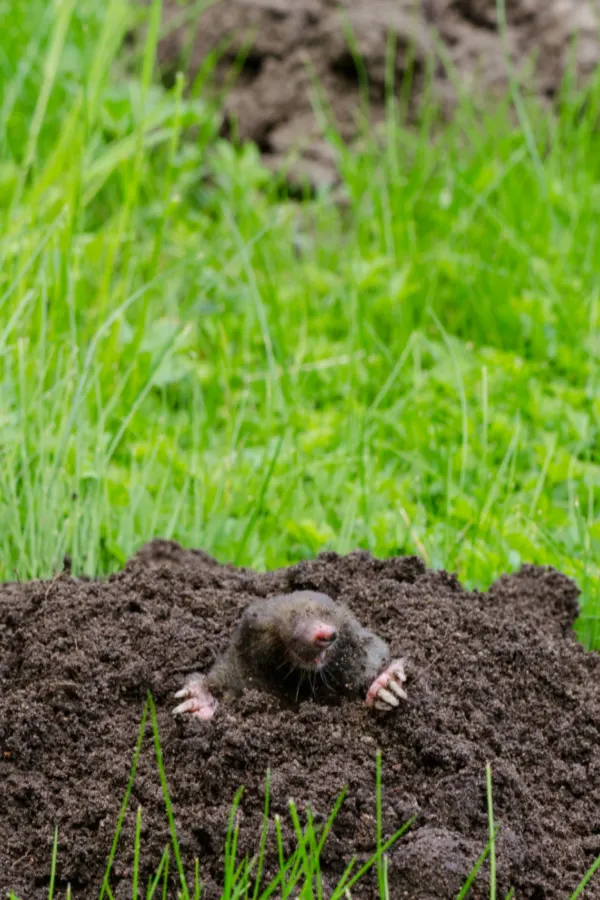
There are chemicals and lethal traps available to purchase. But these items can also be harmful or even fatal to other animals, beneficial ground-dwelling bugs, pets, children, and even adults. Today’s article takes a look at a few natural and safer methods to keep moles far from your landscape.
How To Identify Mole Damage
Unlike ground squirrels and chipmunks that cause damage above the surface of the soil, moles do their damage from below.
The first most obvious sign to look for in your yard or garden is the existence of raised tunnels. As moles move along, the soil is raised up to the surface and creates a hump in soil. They look like large raised snakes wherever they travel.
Another sign is the appearance of dead grass and plants along a path. Again, as the moles move along, the roots are disturbed, often killing or injuring the plants above the soil’s surface.
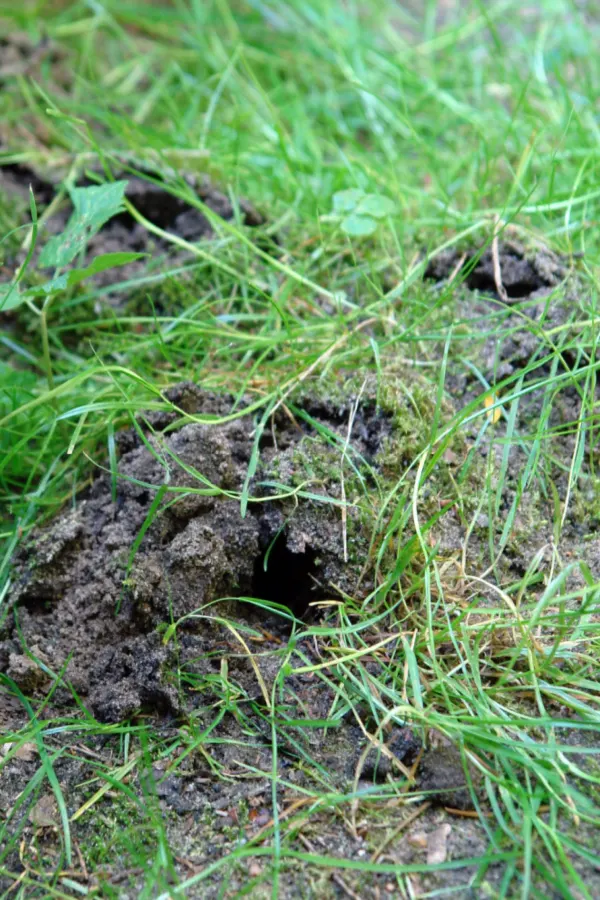
To spot an entrance to a tunnel, you will often see piles of soil on the surface of the ground. Just like a shovel digs and piles the soil into a mound when creating a hole, the moles will do the same, creating “molehills” at the tunnel’s entrance.
Tips For Naturally Stopping Ground Moles
Keep in mind that moles aren’t completely a nuisance for homes and properties. In fact, moles help to eat large amounts of larvae and grubs that are often unwanted in gardens.
One of their favorite meals includes the grubs of the unwanted Japanese Beetle. Not only that, but they will eat the larvae of tomato hornworms and other pests of the garden as well.
The problem with moles comes with their tunnels. They are extremely excellent diggers and can create a tunnel that is 160 feet in length in just a single night.
While those tunnels do help to loosen and aerate the soil, it isn’t very charming for yards and landscapes. In fact, the tunnels can not only be a tripping hazard and a pain to mow over, but they can kill any crops or grasses that were happily growing there before the moles passed through.
Vinegar – Stop Ground Moles
Vinegar is just one of those do-it-all products. You can cook with it, clean with it, and even prevent ground moles with it! It’s a great product that will drive moles away while not killing them or harming your pets, children, or the environment.
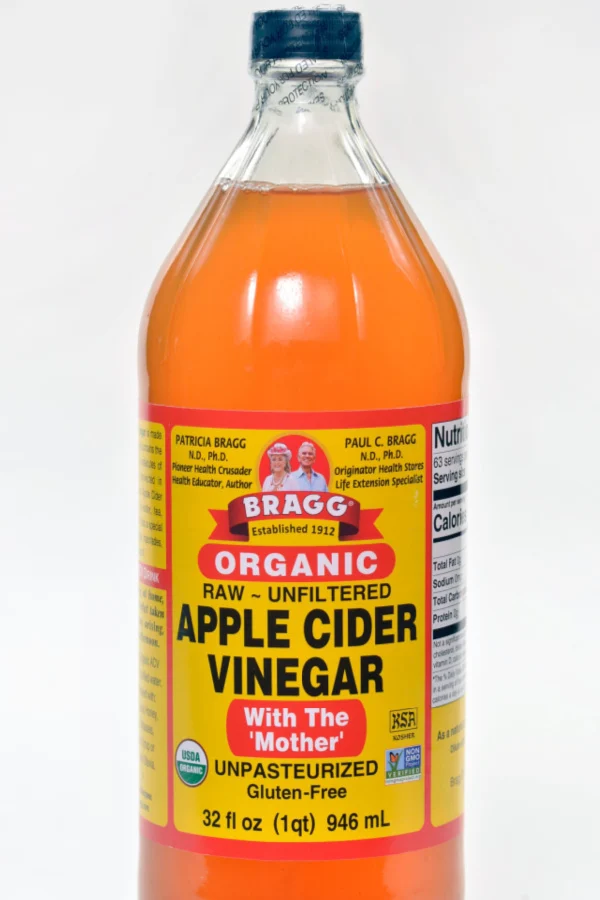
As you are likely aware, vinegar has an extremely pungent odor and taste. In addition, the acid in vinegar can actually cause a slight burning sensation for moles that come into contact with it.
Vinegar can be used as a preventative measure, but it also works well when spraying or pouring directly into tunnel openings. For best results, choose apple cider vinegar instead of milder white vinegar. (Product Link: Apple Cider Vinegar)
Creating The Mixture
Mix one part vinegar with two parts water in a spray bottle, handheld sprayer, or bucket. Either pour or spray the mixture into the tunnel openings where moles have been active. Thoroughly soak the soil around and inside the hole. Repeat every few days for best results until the moles are gone.
Note: If you use a stronger acidic solution of vinegar, be careful when spraying around your grass and near vegetation. Horticultural vinegar has an acid concentration of around 20-45% and will kill neighboring plants and grasses. Stick to your typical store-bought 5% acidity vinegar for safer results for your landscape.
Castor Oil – Stop Ground Moles
Castor oil is a thick, yellow liquid that is created by pressing caster beans. It is not harmful to moles in that it won’t kill them. It is said that they dislike the mild scent, and the oil might cause their digestive systems to become upset if they come into contact with it. (Product Link: Organic Castor Oil)
Some gardeners will even plant caster bean plants in their garden or in locations where they commonly have mole problems. Keep in mind that caster bean plants can be invasive, so that might weigh into your decision for planting.
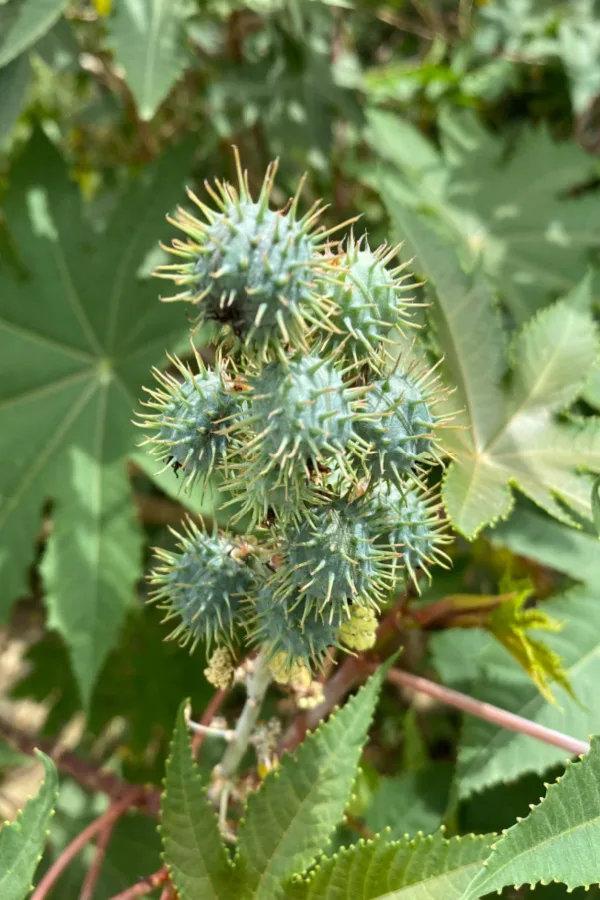
You can also find caster beans or granules to use as an alternative to the oil. Simply place the beans or granules around the tunnel entrances and around molehills.
Homemade Caster Oil Spray
To make a concentrated solution, simply combine two parts of caster oil with one part dish soap until it is nice and foamy. Then, when you want to use it, add about 2 tablespoons per one gallon of water.
Spray the solution directly on the soil and into holes, shaking your container several times to keep the oil mixed with the water. Use it around the molehills and directly into tunnels as well.
The spray should last around a week, even after rains. Keep applying it weekly, and you should see the moles pack their bags and find an alternative location before long.
The best part about caster oil is that unless it is digested, it is safe to use around your other pets and your kids. It is also safe to use for the environment.
Organic D.E. – Stop Ground Moles
Diatomaceous Earth (otherwise known as D.E.) is the remains of crushed tiny fossils of algae and plankton. On a microscopic level, it is rather sharp and causes tiny cuts on insects and smaller pests. (Product Link: Diatomaceous Earth)
Food grade D.E. is 100% organic and safe to use around wildlife, pets, and humans. However, if you are someone who is sensitive to particulates, it is advised that you wear a mask or respirator when using D.E.
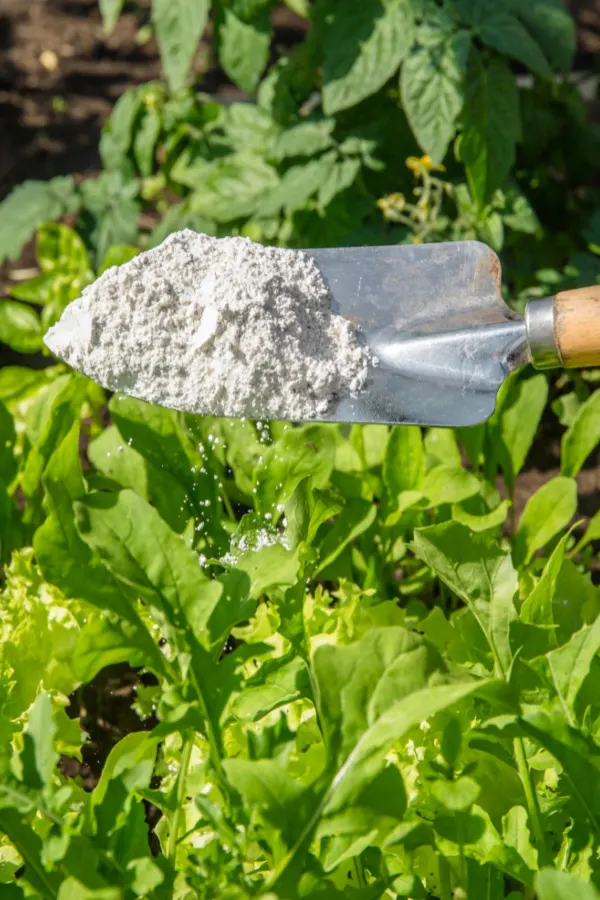
Sprinkle the powder around the tunnel entrances and wherever you think moles might be residing. The moles will avoid going through the D.E. and will move their tunneling elsewhere. Avoid using D.E. just after rains and in the mornings with heavy dew as this will change its effectiveness. You will need to reapply after heavy rains.
Bonus Tips – Stop Ground Moles
While the above suggestions will work great in stopping ground moles from tearing up your yard, there are a few additional tips you can try alone or in combination with the above.
Garlic
Similar to how vinegar works, garlic can have the same effect on moles. Garlic is a great, natural repellent for many different types of pests – moles included. Due to its strong odor, moles tend to steer clear. Consider growing garlic in your garden as a win-win situation: It’s a great crop to harvest and a mole deterrent in one!
However, you don’t have to grow garlic just to see the benefits. Place a few cloves of crushed garlic near their tunnel openings. This is usually enough to cause them to change directions and travel to a less aromatic location.
You will likely need to replace the garlic every few days. But after a while, the moles should be leave the area. You can also create a homemade hot pepper garlic spray that works well also. (Bonus, it’s also great for spraying on plants where you have an insect issue, too!)
Vibrations
Moles do not like feeling vibrations above them on the ground level. It makes them think that potential predators are lurking around above.

While a slight vibration might only cause the moles to pause their travels or digging, constant vibrations will likely cause them to change course altogether. A great, inexpensive way to create a constant vibration is with pinwheels. While this suggestion isn’t technically “natural,” it is still a safe way to deter moles.
Place the pinwheels a few feet apart along the border of your yard where you typically have mole activity. When the wind blows, the pinwheels will spin and cause vibrations. This method really works best in locations that receive regular amounts of wind.
Plant Borders
As mentioned above with garlic, moles don’t like any substance or plants that have a strong odor. Plants in the allium family, marigolds, and other plants with strong odors might help detract moles. Consider planting them around the border of your garden space.
Hopefully, by taking a few of these tips into practice, you can safely and naturally say “goodbye” to the moles in your property and send them on their way!
Follow Our Facebook Page For Even More Great Tips! Simple Garden Life Facebook Page
Simple Garden Life is a website dedicated to keeping gardening fun, simple and enjoyable! We publish two new articles each week along with a new garden podcast episode every two weeks. This article may contain affiliate links.
